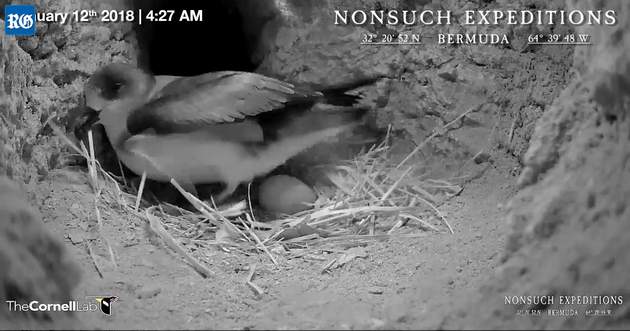Recent News
Captain’s encounters with whalesTuesday, April 22, 2014
You’d think the most unpredictable thing about filming whales would be the whales. Bermudian Dylan Ward said actually, it’s the weather.
Aquarium releases Galapagos Shark
Tuesday, April 22, 2014
It is always hard to say good-bye, even if you’re saying farewell to a 5 foot Galapagos Shark named Desmond!
Photos: Whales Breach During Ocean Vet Outing
Tuesday, April 15, 2014
One of Bernews photographers had the opportunity to tag along with the Ocean Vet team of Dr. Neil Burnie and Choy Aming, getting the chance to see a variety of ocean life in action as the cameras rolled for the production of the 12-part television series.
Whale tale: Burnie featured in new TV series
Monday, April 14, 2014
Stunned awe was the feeling when film producer Dan Radford finally came face to face with a humpback whale
Ocean Vet team to share adventures
Friday, April 11, 2014
The Ocean Vet crew will be sharing the underwater adventures filming their upcoming international series, at a public lecture on Monday.
About
GovernanceAbout Us
Newsletter
Latest News
Gift & Bookstore
Contact
General Inquiries
info@bzs.bm
Latest News
All the latest updates and news from the Bermuda Aquarium, Museum, and Zoo, one of Bermuda's leading visitor attractions!
Owain Johnston-Barnes
Published Jan 15, 2018 at 8:00 am (Updated Jan 15, 2018 at 12:20 am)

This year’s cahow breeding season could be a record breaker, experts predicted yesterday.
Two thirds of the 125 known breeding pairs were nursing eggs by Friday.
And viewers of the CahowCam — a livestream of a nest on breeding site Nonsuch Island — were able to watch one of the endangered birds lay its single egg early yesterday morning.
Jean-Pierre Rouja, team leader of conservation group Nonsuch Expeditions, said the egg was laid at about 4.30am and marked the start of the sixth CahowCam season.
Mr Rouja added that the Bermuda team had signed off at 3am, but their partners from US-based Cornell Lab of Ornithology, who are in Hawaii to install a similar camera to track albatrosses, tweeted the event and alerted Bermuda.
Mr Rouja said that last year, with the support of Cornell, the CahowCam reached 600,000 international viewers who watched a total of 8.5 million minutes of footage.
He added: “As we expand the project, including new ways for our viewers and students to engage, we expect to greatly exceed those numbers this season.”
The same pair of cahows has used the filmed nest since 2009.
Jeremy Maderios, government chief conservation officer, said the pair’s egg last year took 51 days to hatch. Male and female birds take turns to care for the egg.
Mr Madeiros said: “After a record-breaking nesting season last year with 61 chicks fledging out to sea, we seem to be on track for breaking even more records this year.”
The majority of incubating adult cahows he had examined were heavier than normal, with some male birds approaching 500 grams.
Mr Madeiros said that suggested the birds had found good feeding conditions north of the Gulf Stream over the last month.
To watch the livestream, visit Nonsuchisland.com.
Anyone interested in updates on the cahows can also sign up for the Nonsuch Expedition Newsletter and select the CahowCam alert option.


